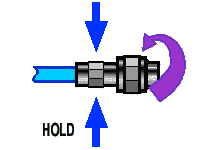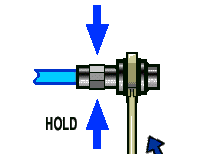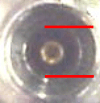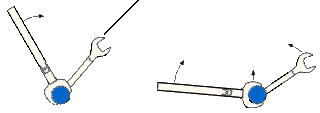Proper use of high frequency coaxial connectors/cables
Connector Types
As frequency requirements increase, the precision with which coax must be made also increases. Due to the characteristics of the cables and connectors, certain cables will only operate effectively up to a certain frequency.
It is important to know how the various connector types should be connected, and what other connector types they are compatible with.
Here is a handy graphic from Keysight that lists the most common connectors along with their frequency rating and compatible connector types:
Connector Type |
Frequency Range |
Mates with... |
Notes |
|
|
|
1.0 mm |
To 110 GHz |
1.0 mm |
Much smaller connector than any of those below. |
|
|
1.85 mm |
To 70 GHz |
2.4 mm |
The outer thread size of the 1.85 and 2.4 connectors is bigger than SMA, 3.5, and 2.92. This makes the area of the outer conductor mating surface look very large compared to the relatively small air dielectric. |
|
|
2.4 mm |
To 50 GHz |
1.85 mm |
The 1.85 mm connector that is manufactured at Keysight has a groove in the male nut and female shoulder to distinguish these two connector types. |
|
|
2.92 mm |
To 40 GHz |
3.5mm and SMA |
These two connectors use the same center pin. |
|
|
3.5 mm |
To 34 GHz |
2.92 mm and SMA |
|
|
|
SMA |
To 24 GHz |
2.92 mm and 3.5 mm |
Uses a PTFE dielectric. |
How to make good connections
It cannot be stressed enough how important it is to read and understand these directions before attempting to make a connection. Improper technique can cause permanent damage to connectors or equipment.
Note: All equipment in the TWISTER system uses 2.92mm connectors. Use an 8 in-lb torque wrench of size 5/16" for all 2.92mm connectors.
See this note before connecting SMA connectors to the system
(The following information was copied from Keysight. The source can be found here)
-
Wear a grounded wrist strap having a 1 MW series resistor.
-
Inspect, clean, and gauge connectors. All connectors must be undamaged, clean, and within mechanical specification.
-
Carefully align center axis of both devices. Push the connectors straight together so they can engage smoothly. The male center conductor pin must slip concentrically into the contact finger of the female connector.

-
CRITICAL: Rotate only the connector nut - NOT THE DEVICE OR CONNECTOR BODY - until finger-tight, being careful not to cross the threads. Damage to both connectors will occur if the male center pin is allowed to rotate in the female contact fingers.

-
Use a torque wrench to make final connection. Tighten until the "break" point of the torque wrench is reached. Do not push beyond initial break point. Use additional wrench, if needed, to prevent device body from turning.

Separating a Connection
-
Support the devices to avoid any twisting, rocking or bending force on either connector.
-
Use an open-end wrench to prevent the device body from turning.
-
Use another open-end wrench to loosen the connector nut.
-
Complete the disconnection by hand, turning only the connector nut.
-
Pull the connectors straight apart.
Using a Torque Wrench
Proper torque on the connector improves measurement repeatability and extends connector life. The tightening torque on connectors has a significant effect on measurements at mm-wave frequencies. Repeatable measurements require consistent torque on all the connections in a setup. A torque wrench avoids damage due to over-tightening and helps connectors achieve their rated lifetimes.
-
Make sure torque wrench is set to the correct torque setting.
-
Position torque wrench, and a second wrench to hold the device or cable, within 90° of each other before applying force. Make sure to support the devices to avoid putting stress on the connectors.
|
|
HOLD |
|
|
|
||
|
CORRECT |
INCORRECT METHOD |
(TOO MUCH LIFT) |
- Hold torque wrench lightly at the end of handle. Then apply force perpendicular to the torque wrench handle. Tighten until the "break" point of the torque wrench is reached. Do not push beyond initial break point.
2.92mm – SMA connections
To connect a 2.92mm male connector to a SMA female connector, use a standard 8 in-lbs torque wrench.
To connect a SMA male to a 2.92mm female connector, use a 5 in-lbs torque wrench.
Note: SMA male - 2.92 female connections should be avoided if possible. Use only high quality SMA connectors and verify that the center pin is not bent or damaged in any way before use.
How to properly handle coaxial cables
Properly handling coax is important to prevent damage and guarantee good results from test equipment. A few pointers for using precision coaxial cables:
- Do not bend the cables too sharply. The performance of the cable can be degraded and negatively affect your test results.
In the worst case, the dielectric of the cable can be permanently deformed, causing it to no longer operate within spec. - Do not drop or otherwise bang the connectors around. The center conductor of the 2.92mm connector is very fragile. The female-female connector savers are especially vulnerable to damage.
- Do not allow debris to enter the connectors. Female type connectors especially should always be covered when not in use.






